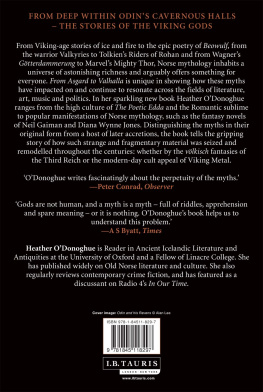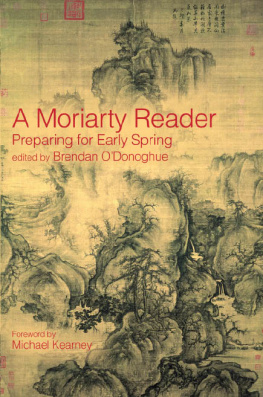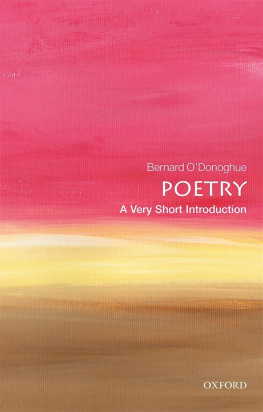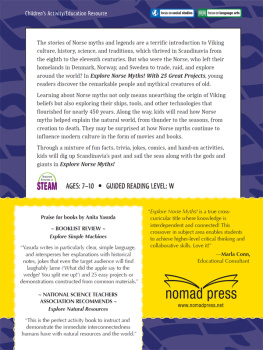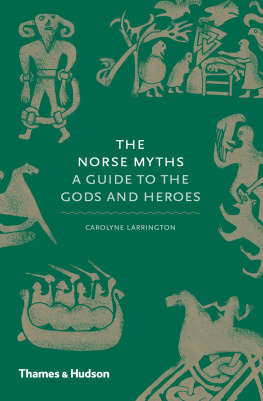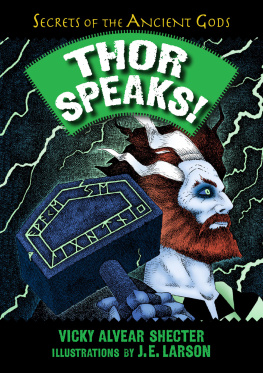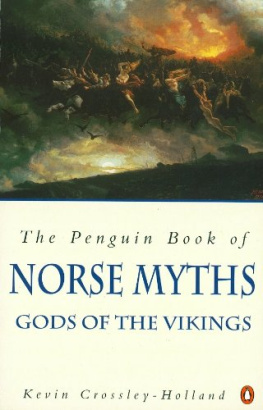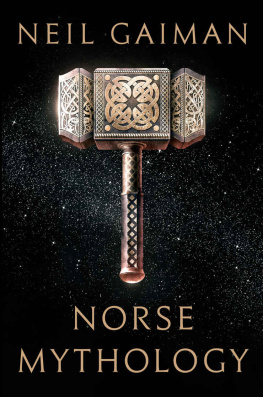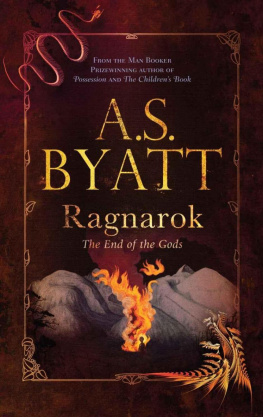From Asgard to Valhalla
For Ellen, Tom and Josie:
the next generation

Reprinted twice in 2010 by I.B.Tauris & Co Ltd
6 Salem Road, London W2 4BU
175 Fifth Avenue, New York NY 10010
www.ibtauris.com
New paperback edition published in 2008 by I.B.Tauris & Co Ltd
Published in hardback in 2007 by I.B.Tauris & Co. Ltd
In the United States and Canada distributed by Palgrave Macmillan, a division of St. Martins Press, 175 Fifth Avenue, New York NY 10010
Copyright Heather ODonoghue, 2007, 2008
The right of Heather ODonoghue to be identified as the author of this work has been asserted by her in accordance with the Copyright, Designs and Patents Act 1988.
All rights reserved. Except for brief quotations in a review, this book, or any part thereof, may not be reproduced, stored in or introduced into a retrieval system, or transmitted, in any form or by any means, electronic, mechanical, photocopying, recording or otherwise, without the prior written permission of the publisher.
Every effort has been made to contact copyright holders concerning images used in this book. Where contact was impossible, images are used according to the fair use provisions of relevant copyright laws.
ISBN 978 1 84511 829 7
eISBN 978 0 85773 043 5
A full CIP record for this book is available from the British Library
A full CIP record for this book is available from the Library of Congress
Library of Congress catalog card: available
Typeset in Sabon by
by Dexter Haven Associates Ltd, London
LIST OF PLATES
ACKNOWLEDGEMENTS
I would like to thank all the students who came to my lectures and classes on Norse myth. Whether they made comments, asked questions, looked interested or looked bored, they all contributed to the writing of this book, and I am grateful to them. A number of people offered invaluable specialist advice: David Clark, Antje Frotscher, Alastair Hird, Carolyne Larrington, Phil Lavender, Josephine McDonagh, Tom ODonoghue, Alex Sarll, Emma Smith and Beth Tovey. Particular thanks go to Tara Stubbs, who gave me an enormous amount of expert help with pictures and proof-reading, and to Alex Wright at I.B.Tauris, who has been unfailingly supportive from the very beginning. The idea for this book came to us both, separately but simultaneously.
A NOTE ON PROPER NAMES
I have anglicized many of the Norse proper names, especially those which have been picked up and used by later writers in English. This has often involved substituting special characters, and removing accents and the final r from names such as Olaf (Old Norse lfr), or Frey (Old Norse Freyr). Sometimes, however, that final r has been retained by later writers for instance, Balder is a common form of the Old Norse Baldr. In cases such as this, and others, I have retained it. No doubt there will be inconsistencies; my aim has been ease of usage and readability, rather than strict regularity.
PART ONE | 
|
THE EARLIEST SOURCES OF OLD NORSE MYTHOLOGY
CHAPTER 1 | 
|
Creation and Cosmos
I celand, as I explained in the introduction, was settled by a mixed population Celtic and Scandinavian, Christian and pagan bringing with them, no doubt, a wide range of literary traditions and backgrounds. But all these stories and poems were oral: nothing was written down. However, in pre-Christian mainland Scandinavia, memorial inscriptions, and sometimes even scraps of early poetry, were carved on wood, bone or stone particularly gravestones in the old Germanic alphabet: runes.
The origins of the runic alphabet are mysterious, but it may have been used as early as the first century AD . The alphabet is sometimes called the futhark after its first six letters: F U (the equivalent of English th) A R K, and the stiff angularity in the shape of these runic letters is usually explained as a stylistic adaptation to the difficulties of carving on wood, with its pronounced grain. There is no runic language: runic inscriptions are found in various early Germanic languages, including Anglo-Saxon, but especially in the early Scandinavian used all over mainland Scandinavia before the settlement of Iceland. Christian gravestones with pious runic inscriptions are also quite common; it has sometimes been claimed that runes were somehow magical, or even divinatory (as in the modern journalistic clich reading the runes to mean making an educated guess about the political or financial future). But although, as we shall see, runes play a fascinating role in Old Norse mythology, in historical reality they were used for all sorts of purposes, even everyday ones, as a recent find of runic messages on scraps of wood and bark in Norway makes clear: we have here shopping lists, grocery prices even a demand from a disgruntled housewife that her husband come back from the pub. It may even be the case that runes were sometimes used for decorative purposes, without any regard for possible meaning. It has been tempting for runologists to interpret obscure sequences of letters as magical formulae; it is more likely that they are either incompetent inscriptions, practice runs by apprentice rune-carvers, or simply idle decoration.
For whatever reason, no evidence of runic inscriptions has been found in Iceland nor, indeed, any examples of figurative or symbolic rock carvings such as are also found in mainland Scandinavia. No literary trace of pre-Christian Iceland remains. It is almost as if the national conversion to Christianity in the year 1000 AD when Iceland, at its legal and parliamentary assembly, the Althing, decided, in the very secular and legalistic interests of the unity of the nation, to adopt Christian laws (perhaps the most non-spiritual conversion in human history) released a dammed-up flood of literary endeavour as the new nation filled sheets and sheets of vellum with laws, saints lives, translations of devotional texts, sagas, poems and histories. The literary inscription of a new nation had begun. Even so, the first surviving manuscripts are from the twelfth century, and the high point of literary production seems to have begun in the thirteenth century. It was in this century that the manuscript now known as the Codex Regius was produced: it comprises a collection of mythological poems of varying date and provenance and authorship. This collection is usually known as the Poetic Edda, and the poems in it, together with a handful of similar poems in other manuscripts, as Eddaic verse. The poems are not attributed to any named poets perhaps because they had long outlived the impress of an individual creator, and had passed into collective anonymity. But the poems have been ordered with meticulous care, the mythological giving way to heroic, and the collection opening with the mighty and most difficult text: Vlusp.
Vlusp: the title of the poem means the sibyls prophecy. But the sibyls words are not only a prophecy of what is to come, but also an immense and authoritative recall of times immemorial and these powerful words are presented as a response to the god Odin (here called Valfr, the father of the slain). They are, the sibyl tells us, the worlds old news. And the sibyls first memory is of giants.
It is unfortunate that giants have a fairy-tale connotation in modern English, and that what is now conjured up by the term giant is a great, lumbering, half-witted creature, gratifyingly and often lethally outwitted by smaller, younger and smarter persons like Jack the Giantkiller. (Elves too have a very different character in childrens literature from the chillingly shadowy beings of Norse mythology, as we shall see in due course.)

